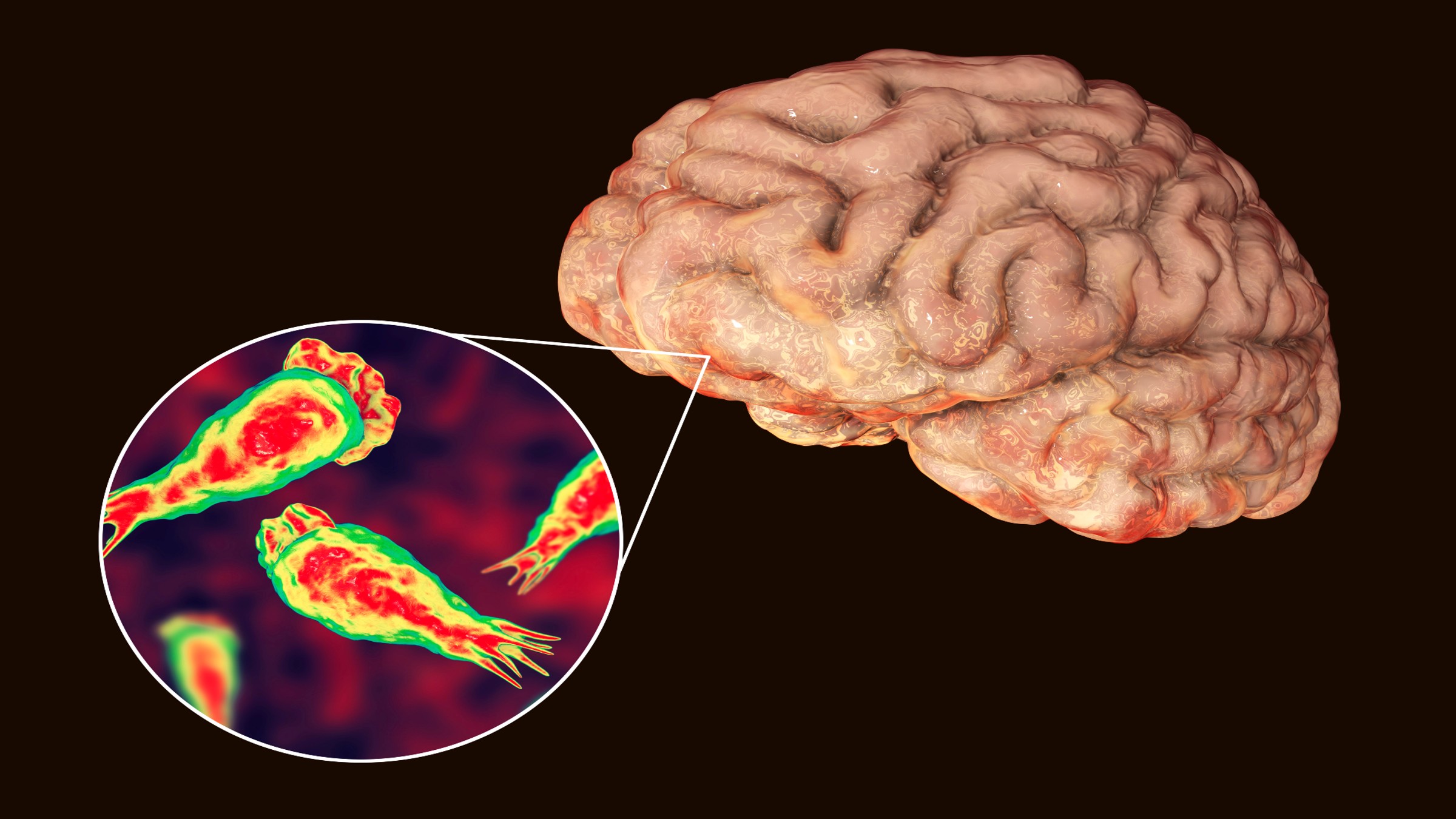
A 2-year-old boy in Nevada has died after being infected with a "brain-eating" amoeba after visiting a natural hot spring in the state.
In a statement published July 20, the Nevada Division of Public and Behavioral Health (DPBH) announced that the boy — named Woodrow Bundy, according to a Facebook post from his family — was likely exposed to the microbe at Ash Springs in Lincoln County. According to the DPBH, the Centers for Disease Control and Prevention (CDC) confirmed that the child's condition was caused by Naegleria fowleri, a single-cell organism known to cause such brain infections.
Typically found in soil and warm fresh water, such as lakes, rivers, hot springs and sometimes freshwater spouting from splash pads, the amoeba can cause a rare but deadly infection of the brain, known as primary amebic meningoencephalitis (PAM).
"If you wind up getting infected with it, chances are you’re going to die," Brian Labus, an epidemiologist and associate professor at the University of Nevada, told FOX5. "Very few people have actually survived this type of infection."
Related: 'Brain-eating' amoeba ruled out in 'cluster of illnesses' in Oklahoma. What could the cause be?
CDC figures show that, of the 154 people known to have been infected by N. fowleri between 1962 and 2021, only four have survived. People typically become infected when water carrying the amoeba enters their nose, likely during swimming or diving, and travels up to the brain via nerves in the nasal cavity. From there, N. fowleri begins to destroy brain tissue, resulting in its nickname as a "brain-eating amoeba."
"It progresses rather rapidly because it's actively destroying brain tissue, so it's very difficult for your body to deal with something like that and fight it off," Labus told FOX5.
Symptoms of PAM usually begin around five days after exposure to the amoeba, the CDC states, and they can include headaches, fever, nausea or vomiting. At later stages of the disease, victims may experience a stiff neck and confusion and show a lack of attention to people and surroundings, and they may also develop seizures or hallucinations. They may even fall into a coma. Usually, a patient will die around five days after symptoms emerge.
According to the CDC, young boys like Bundy are at the highest risk of being infected with N. fowleri, compared to other demographics. The reason why is unclear, but the agency suggests this could be because boys more often take part in water activities, such as diving and playing in the sediment at the bottom of lakes and rivers. (The DPBH didn't note whether Bundy was swimming at the time of his exposure or potentially encountered the amoeba some other way.)
N. fowleri can't be spread from one person to another — it enters the body only through exposure to contaminated water. The DPBH noted that there is "no means to eliminate the ameba from fresh bodies of water," so people should "always assume there is a risk," of exposure, even if that risk is extremely low.
"The only sure way to prevent an infection is to avoid water-related activities in warm fresh water, especially during summer months," the CDC notes. People who choose to swim, however, can reduce their risk of infection by stopping water going up their nose. This could involve avoiding diving, using nose clips or not putting your head under water, the CDC suggests.







